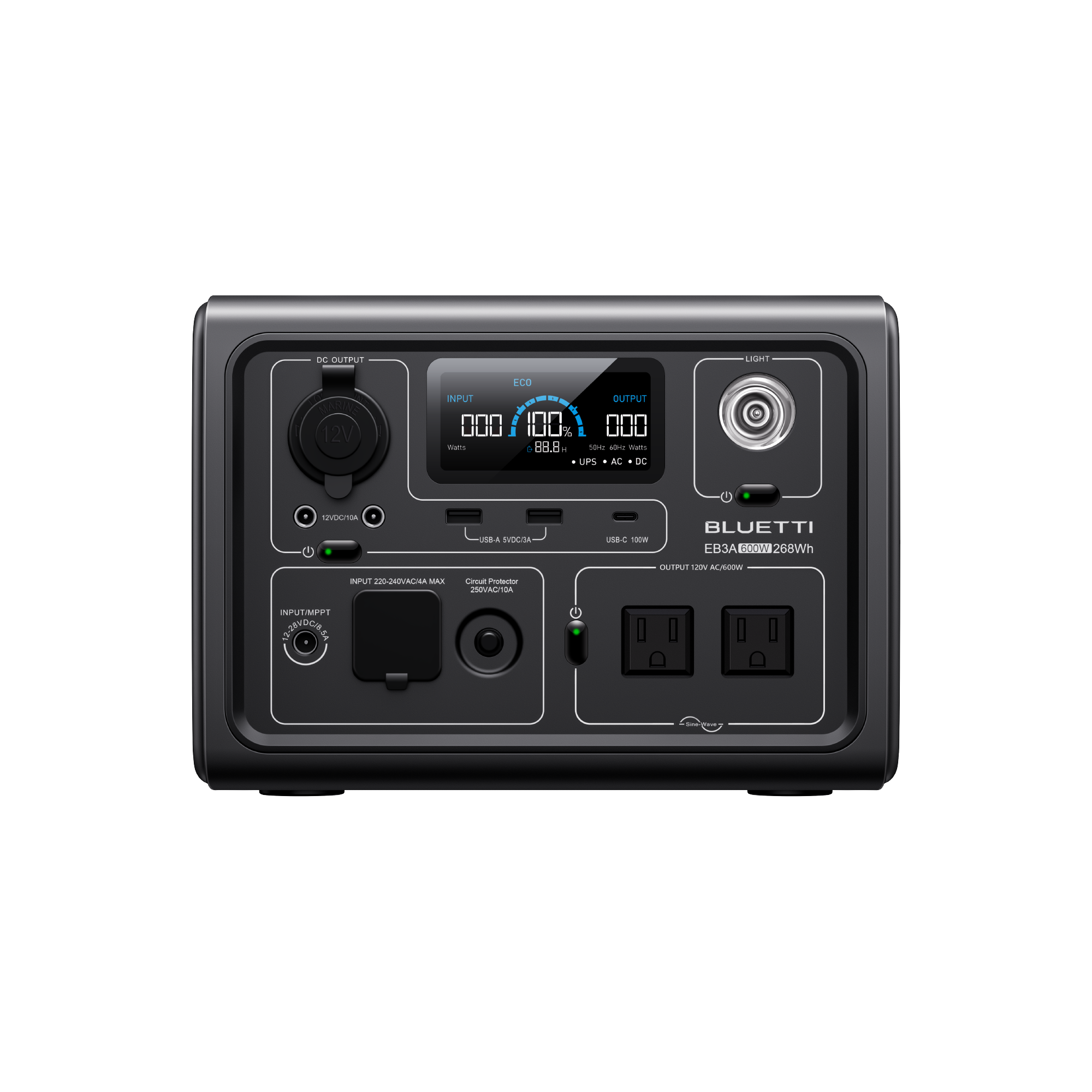- What is the difference between a Lithium and a LiFePo4 battery??
For all intents and purposes on this forum, lithium=lifepo4.
But to be more clear, "lithium" could mean one of any number of specific lithium chemistries used in batteries. Some are rechargeable and some are not. Energizer AA and AAA lithiums are also known as "lithium primaries" and are not rechargeable, but do share some of the similar characteristics of other lithium battery chemistries, such as handling large amounts of current relative to their size without much voltage drop.
I am considering getting the Renogy 200w to charge my (2) Bluetti EB3A battery stations. One at a time, charge one while using the other....
I want portable solar panels so I can use them camping or on my boat.
BLUETTI EB3A, 40 minutes to reach 80% charged! Just a ultra-portable power station that crazy campers will love.

www.bluettipower.com
My questions are:
- Will this be acceptable?
- What is the difference between a Lithium and a LiFePo4 battery??
- Do I need/want to change to a MPPT Controller ???
Thanks in advance,
Tim
I'm not familiar with the Bluetti power stations, but I do own one of the renogy 200W folding suitcases. From what I can tell, the Bluetti has a built-in solar charge controller, not sure if it's MPPT or PWM. For charging such a small device/battery, it doesn't make a huge difference between the two, imo. You'll need the special Bluetti cable to connect panels to the Bluetti, though and I'm not clear from their website whether or not this is included and it doesn't appear to be for sale on their website (connects MC4 connectors from solar panels to the Bluetti solar input).
The Renogy suitcase comes with two glass-faced panels that fold open, a small PWM charge controller and a zippered padded case. There is a spring loaded handle on the panels that sticks out of the case so you can carry it around. The thing is pretty heavy. If you plan to move, setup and take down the panels very regularly, the extra robustness of glass panels may be the way to go, even if they are heavier. The Bluetti 200W panel setup looks much lighter, but it doesn't appear that they are glass-faced panels. If you don't need the panels to last 20+ years or don't want to lug around large and heavy panels, the Bluetti ones might be better for you.
Also, the Renogy suitcase comes pre-wired through the included PWM charge controller. You would need to re-do the wiring if you needed to bypass the PWM controller to plug directly into the Bluetti. Not difficult, but if you're not comfortable cutting and crimping wires together, then that might be another reason to skip the Renogy one.
Finally, I have mixed feelings about Renogy gear. We have had a lot of it and have gotten rid of some of it. It's not all bad stuff and the price is right especially when they have sales. Their AGM lead batteries were total junk, their 2000W inverter worked but was inefficient and their MPPT charge controller works, but is limited on it's programmability. The 200W suitcase is actually pretty decent, especially considering the price we paid having found used (appeared brand new as far as we could tell) for under $300. The padded zipper case is both very handy and very cheaply made. The zipper never zipped fully right out of the box as it appears they used the cheapest kind of zipper you can imagine. But it zips enough, for now, to keep the case on the panels so they are protected during transport and makes sliding them in and out of our truck much easier (the panels fold in such a way that the glass faces outwards...the backs of the panels face each other when folded in half for storage).

 www.bluettipower.com
www.bluettipower.com

 www.bluettipower.com
www.bluettipower.com


